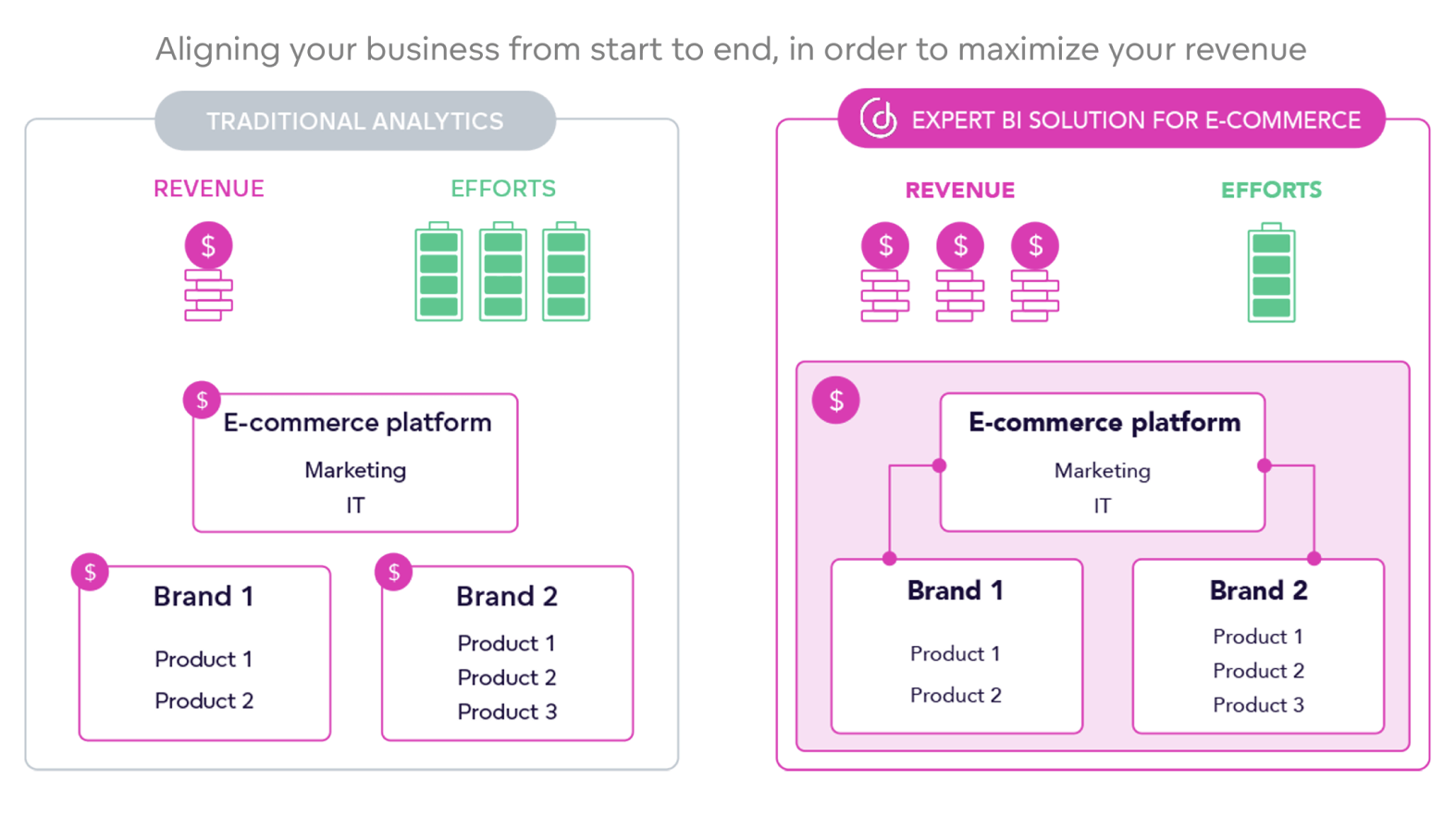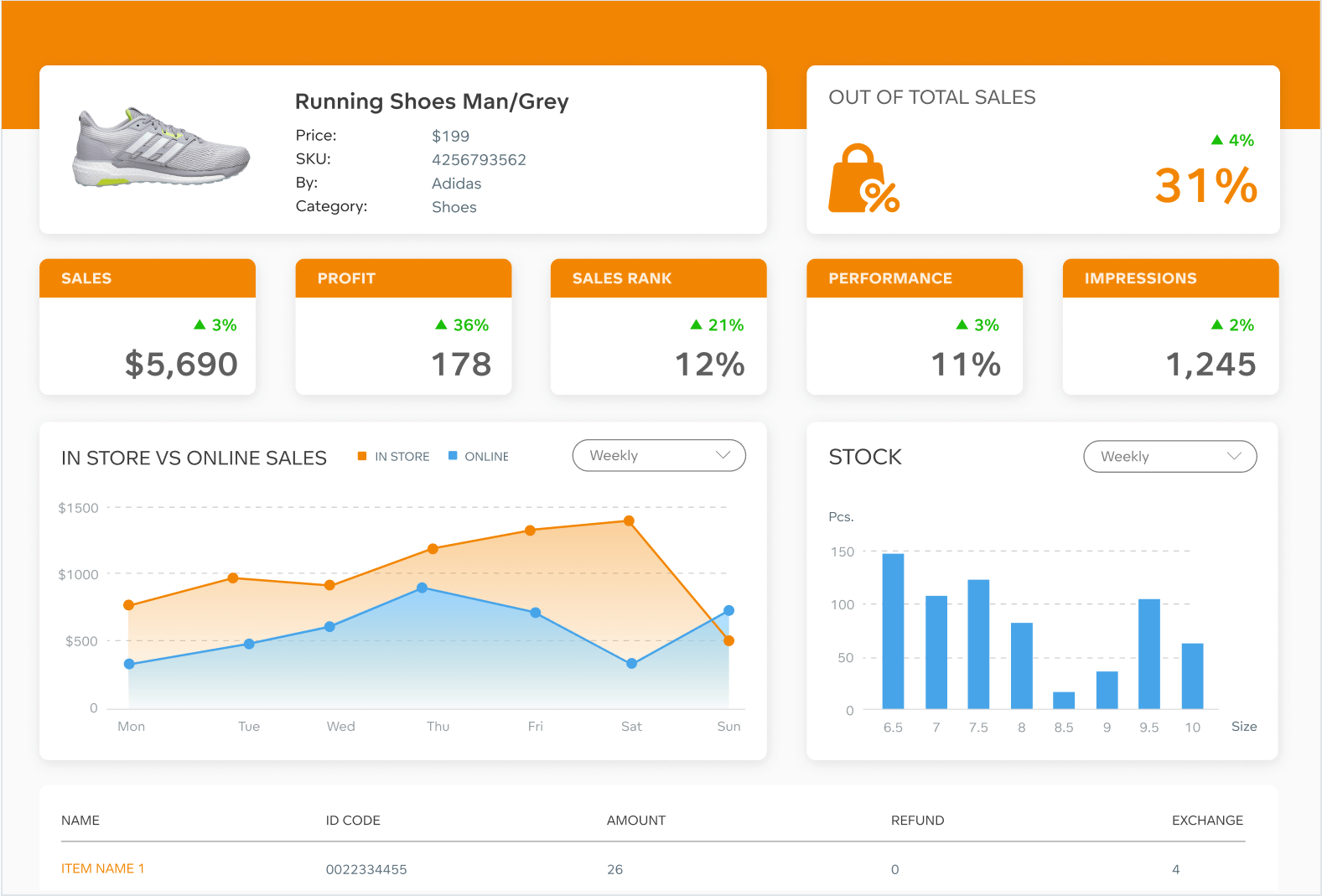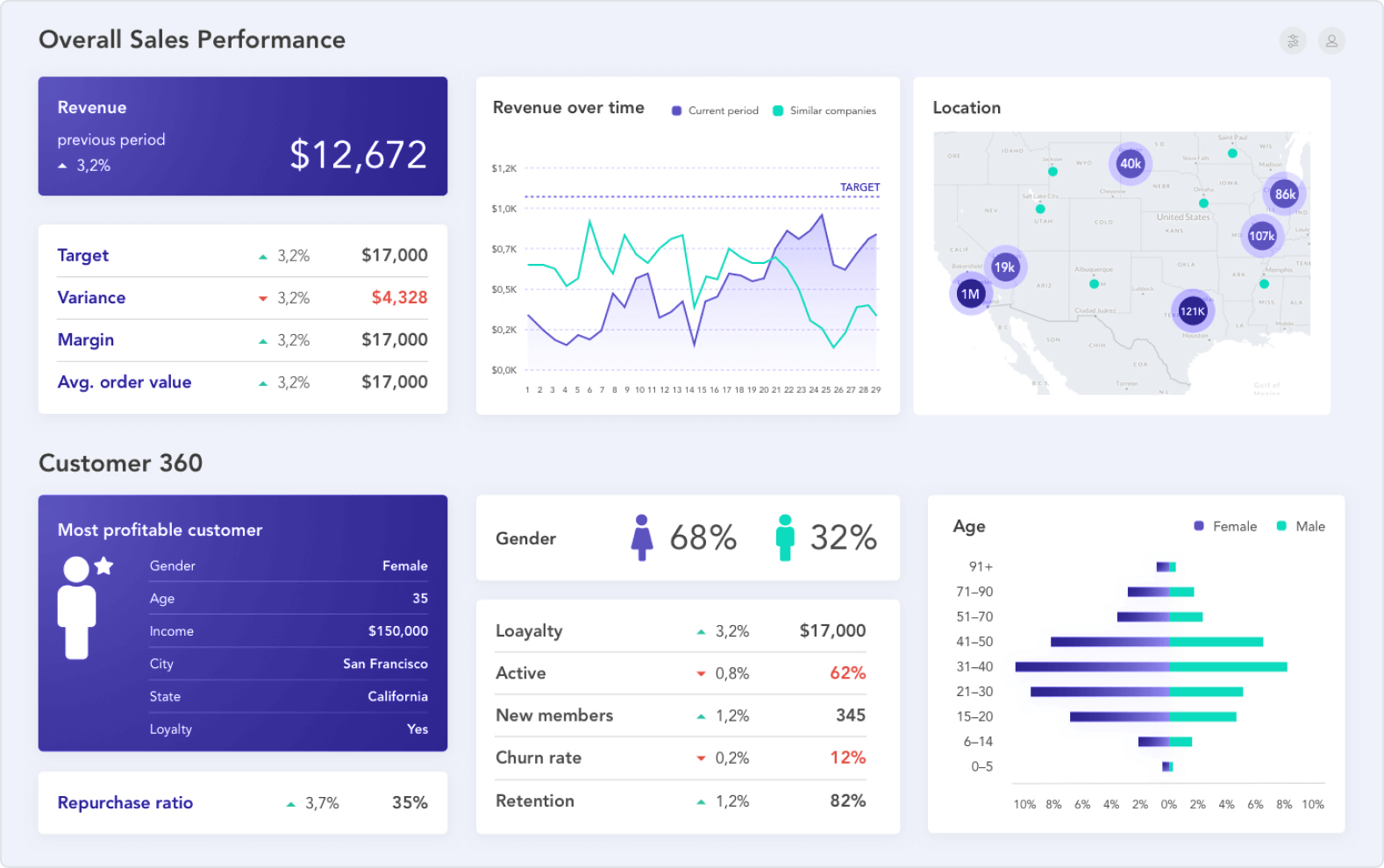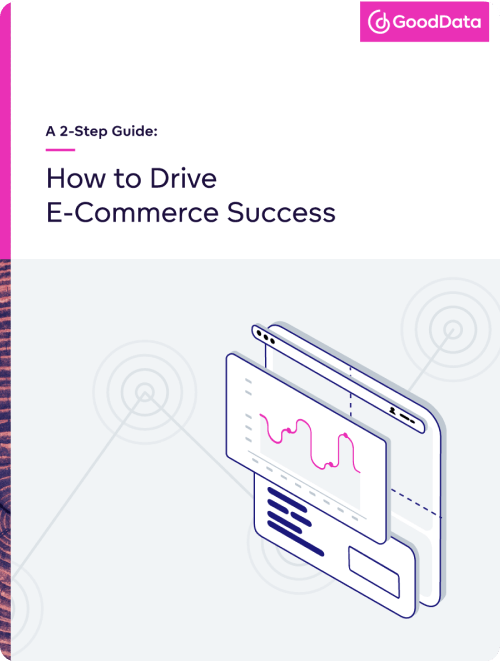E-commerce has become an increasingly competitive business. The market is populated with more and more online sales portals, through which brands & suppliers can choose to sell their products. They are no longer limited to only a handful of options.
Making matters more complex, consumers have become more exacting; expecting faster delivery times and bigger choice, while returning goods much more frequently. This, coupled with the market’s rapid rate of evolution, makes daily performance, operations, and sales optimization a real challenge.
The good news? Data analytics can help you to advance your business and alleviate some of the headaches, all with data you already have.
Just to be clear though, we’re not talking about a traditional data analytics platform, on which you probably already run internal analytics, for marketing or other business processes.
Retail e-commerce can achieve more and make it last
To maximize your business, and achieve lasting effects, you need a business analytics solution that can bring data on products, sales and customer behavior directly to your brands and suppliers, in a quick and cost-effective package.
And, of course, without compromising your brands’ privacy or data security layers. You need to automate the flow of data and give your brands the power to create and customize their own reports and dashboards for any specific product or pain point.
In turn, this allows you to align your business throughout, from start to finish, by promoting a common understanding of how to drive your business forward and maximize your revenue.
Speaking to our customers, to learn more about how they take advantage of the GoodData solution and architecture, led us to the following formula for success.
Step 1: Maximizing sales and existing revenue streams
Become the best online revenue channel for brands & suppliers
In the fast-growing e-commerce sector, maximizing performance is key in ensuring the loyalty of your brands and suppliers while also attracting new business.
Failing to build up a platform that empowers their performance, leaves the door open to competitor dominance. Data, however, can help you deliver.

Analytics to power your sales engine
Gone are the days of simply providing monthly sales figures and basic customer data via spreadsheets or pdf documents. In order for brands to react to new trends or changes in demand, and increase performance on your platform, they need daily actionable insights.
Armed with the right solution, you can automate the data you push out to your brands, maximizing wins with less time and money spent.
This not only helps your brands to increase their performance but also has the resulting effect of maximizing your business, even in the areas where you hold little or no direct control.
Aligning your business in this way, end to end, means you and your brands mutually benefit from the power of the data you already collect. Their success fuels your success, and likewise; yours fuels theirs.
Get the answers to grow faster
Business alignment through data also gives each party the tools to focus on what’s most important to them. With instant access to reports and dashboards, your brands can:
- identify weak spots and weak products faster
- prepare for an upcoming trend and adjust stock levels accordingly
- identify reasons for repeat returns on a specific product
- decrease inefficiencies and lower operational costs leaving you to focus on marketing and maximizing your platform
In this way, you can naturally promote a common understanding of how to drive business forward.
Attracting new brands and suppliers
As well as increasing satisfaction and loyalty with your current brands and suppliers, adding data analytics capabilities to your marketplace will help to attract new ones.
Through word-of-mouth, as well as marketing campaigns, surrounding your new data analytics offering, you will increase your ability to win the attention of new brands and suppliers in a competitive marketplace. Data will be your new competitive advantage.
Step 2: Monetizing your data and creating a new revenue stream
While the data you already collect can help maximize your existing business model, increasing brand partner loyalty, and attracting new ones, it can also provide an entirely new revenue stream.
By creating ‘free’ and ‘paid’ tiers within your data offering, you can tap into a new revenue stream while giving your brands the ability to improve their performance. And as that data helps them streamline their business, so does their desire to access more data to further increase their performance.
And as that data helps them streamline their business, so does their desire to access more data to further increase their performance.
Below is an example of how your tiered data offering might look. With the free data tier as your brands’ entry point to analytics, giving them access to operational insights, and the paid data tier letting them expand to in-depth sales analysis and consumer behaviour.
Example: Free vs. Paid

The free data tier might, for example, focus on data relating to product planning and quality to optimize stock levels and reduce return rate.
- Do we have enough stock for every product and size S/M/L?
- Is there any new trend emerging that might require increased stock for a specific product?
- What is the main reason for returning the product?
- Which products are the best sellers this week?

The paid data tier might, for example, focus on sales and consumer insights to bolster and optimize marketing activities.
- How are we doing in sales, growth, margin WTW, MTM, YTY?
- Are we going to achieve the sales target for this month?
- What product is the most popular per demo/geo?
- How do we compare to other brands selling on the platform?
Fast results with long-lasting effects
Extending analytics to external partners as well as internal teams, through a single analytics solution, has proven to be a profitable means of growth for many organizations.
An average of $4.00 in the first three years for every dollar invested - report our customers who either built or rebuilt their business analytics accordingly.
Why the world’s top companies choose GoodData
Business:
Only one platform for ALL: internal teams, client companies, external partners
Self-service visualization for business managers
Your own branding
Susitainable pricing that fits your business at all times (no paying per user)
The highest data privacy and security certifications
Technical:
Automated scaling to different departments and companies
Embedded dashboards in your application or software product
Streamlined multi-tenant change management
150+ data-source options
Fully hosted or deployed as a container in your application
Continue Reading This Article
Enjoy this article as well as all of our content.
Does GoodData look like the better fit?
Get a demo now and see for yourself. It’s commitment-free.











